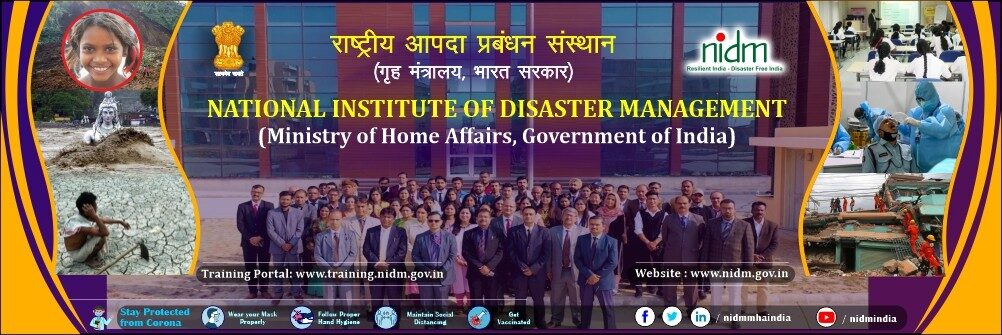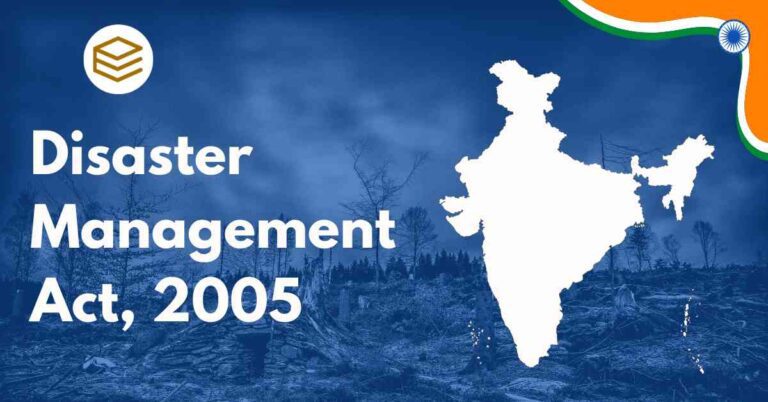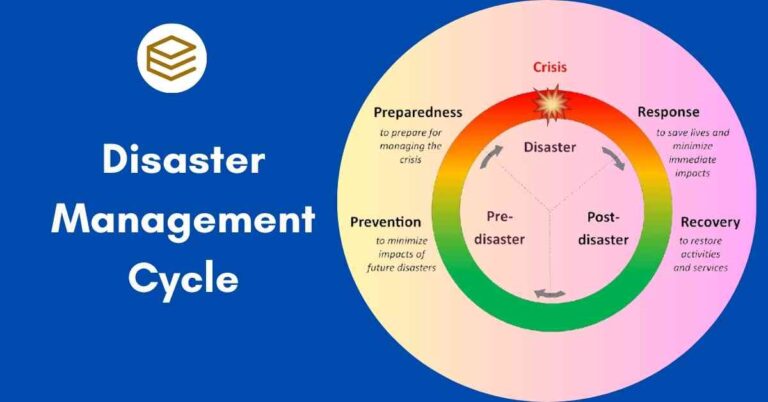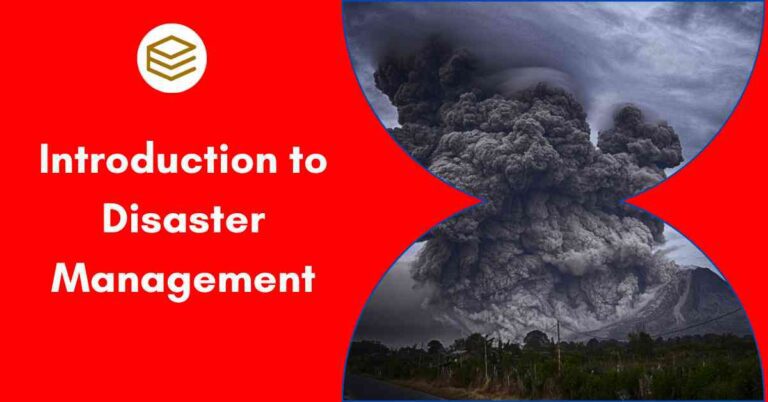October 24, 2025 6:25 pm
Overview:
The National Institute of Disaster Management (NIDM) is a premier institute in India, dedicated to capacity-building, training, research, and policy advocacy in the field of disaster management. Established under the Disaster Management Act, 2005, it operates as a statutory body under the Ministry of Home Affairs, Government of India.
NIDM plays a pivotal role in strengthening the disaster management framework of the country through its focus on prevention, mitigation, preparedness, and post-disaster recovery. It works in alignment with global frameworks like the Sendai Framework for Disaster Risk Reduction (2015–2030).
Vision and Mission
- Vision: To create a disaster-resilient India by promoting a culture of prevention and preparedness.
- Mission: To act as a center of excellence for capacity-building, training, and research in disaster risk reduction (DRR) and management.
Background of the National Institute of Disaster Management (NIDM)
The National Institute of Disaster Management (NIDM) is a premier institute in India established to enhance capacity building, training, and research in disaster risk reduction and management. Its creation is rooted in the growing realization of the need for a proactive, scientific, and institutionalized approach to managing disasters in India.
Key Developments Leading to the Establishment of NIDM
- India’s Growing Vulnerability to Disasters:
- India’s geographic and climatic diversity makes it highly vulnerable to natural disasters such as earthquakes, cyclones, floods, and droughts, as well as human-made disasters like industrial accidents and urban fires.
- Disasters like the 1999 Odisha Super Cyclone and the 2001 Bhuj Earthquake underscored the urgent need for capacity-building initiatives and disaster management frameworks.
- Yokohama Strategy (1994):
- India’s commitment to global disaster management strategies began with its endorsement of the Yokohama Strategy for a Safer World. This framework emphasized capacity-building and preparedness, laying the groundwork for NIDM’s focus areas.
- Formation of a High-Powered Committee (1999):
- The Government of India constituted a High-Powered Committee on Disaster Management in 1999 to review and recommend strategies for disaster risk management.
- The committee advocated for the establishment of a dedicated training and research institution to strengthen disaster management in the country.
- Recognition of Capacity Gaps:
- The lack of trained personnel, scientific research, and public awareness about disaster management highlighted the need for a specialized institution to address these gaps.
- Establishment of the Disaster Management Institute (DMI):
- As a precursor to NIDM, the Disaster Management Institute was established in 1995 in Bhopal, Madhya Pradesh, focusing on disaster preparedness and response.
- Mandate under the Disaster Management Act, 2005:
- The Disaster Management Act, 2005, formally recognized the need for an apex institute dedicated to disaster management and mandated the establishment of NIDM as a statutory body under the Ministry of Home Affairs.
Evolution of NIDM
- Predecessor – National Centre for Disaster Management (NCDM):
- Before becoming NIDM, the institute operated as the National Centre for Disaster Management (NCDM) under the Indian Institute of Public Administration (IIPA), established in 1995.
- NCDM was primarily a research and training center focused on capacity-building for disaster preparedness.
- Transition to NIDM (2003):
- Recognizing the growing importance of disaster risk reduction, NCDM was upgraded to the NIDM in 2003.
- NIDM was tasked with expanding its role to include research, policy advocacy, and international collaboration.
- Statutory Recognition (2005):
- The Disaster Management Act, 2005, provided NIDM with legal backing, formalizing its role as the apex institution for disaster management training and research in India.
Global Influence and Commitments
- Alignment with Global Frameworks:
- NIDM’s establishment and evolution were influenced by global frameworks like:
- The Hyogo Framework for Action (2005–2015), which emphasized capacity-building and risk reduction.
- The Sendai Framework for Disaster Risk Reduction (2015–2030), focusing on resilience and sustainability.
- NIDM’s establishment and evolution were influenced by global frameworks like:
- Collaborations:
- NIDM collaborates with international organizations such as the United Nations Office for Disaster Risk Reduction (UNDRR) and the World Bank to enhance its knowledge-sharing and capacity-building initiatives.
Key Functions of NIDM
- Training and Capacity-Building:
- Organizing training programs for government officials, community leaders, and other stakeholders involved in disaster management.
- Providing technical and managerial skills to strengthen disaster preparedness and mitigation efforts.
- Research and Development:
- Conducting research on various aspects of disaster management, including risk assessment, hazard mapping, and best practices.
- Collaborating with academic institutions and international organizations for advanced research.
- Policy Advocacy:
- Advising the government on policies related to disaster risk reduction and management.
- Contributing to the development of guidelines and protocols for disaster preparedness and response.
- Knowledge Dissemination:
- Publishing reports, case studies, and educational materials to promote awareness about disaster management.
- Maintaining an online repository of resources, including disaster-related data and training modules.
- Support to State and Local Governments:
- Assisting states in preparing and implementing disaster management plans.
- Providing technical support to local administrations for capacity-building and disaster response.
- Collaboration and Networking:
- Partnering with international organizations like the United Nations Office for Disaster Risk Reduction (UNDRR) and World Bank.
- Building networks with universities, NGOs, and private sectors to enhance disaster management efforts.
Initiatives and Programs of NIDM
- Capacity Development Framework (CDF):
- A structured approach for training government officials and other stakeholders on disaster risk reduction and response.
- Online Training Programs:
- Offering e-learning courses on disaster management topics, including climate change adaptation, urban risk reduction, and community resilience.
- National Platform for Disaster Risk Reduction (NPDRR):
- NIDM supports this platform to encourage dialogue among stakeholders for disaster risk reduction strategies.
- Workshops and Seminars:
- Organizing national and international workshops to discuss advancements in disaster management.
- Climate Change Adaptation:
- Promoting strategies to address climate-related risks as part of disaster risk reduction efforts.
Role of NIDM in Disaster Management Act, 2005
Under the Disaster Management Act, 2005, NIDM is mandated to:
- Develop training modules and conduct training programs.
- Promote research in disaster management.
- Collaborate with state and central disaster management authorities.
- Prepare and publish guidelines, resources, and manuals for disaster risk reduction.
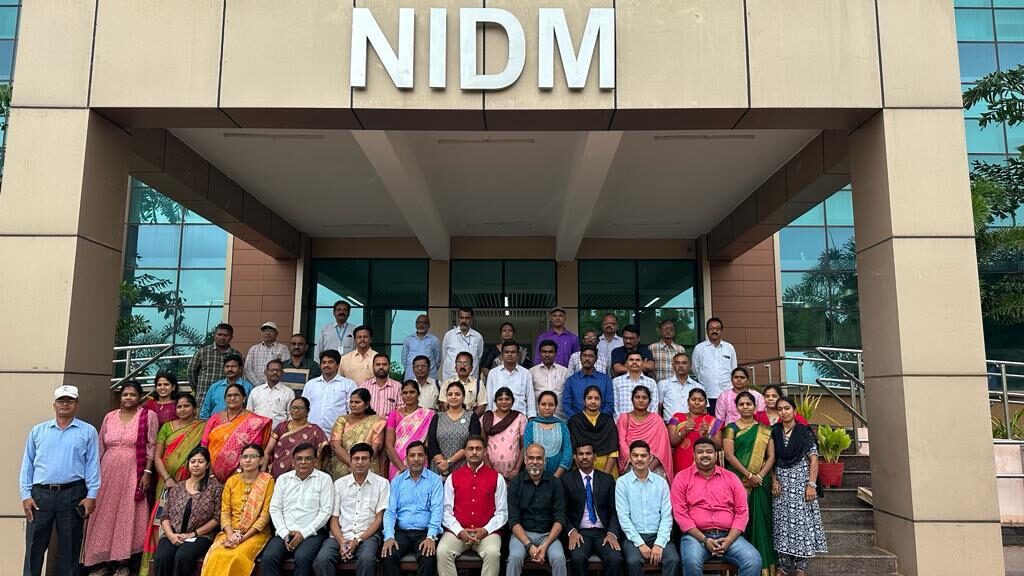
Global Alignment: Sendai Framework for Disaster Risk Reduction (2015–2030)
NIDM’s work aligns closely with the Sendai Framework, which emphasizes:
- Understanding disaster risk.
- Strengthening disaster risk governance.
- Investing in disaster risk reduction for resilience.
- Enhancing disaster preparedness for effective response.
Key Achievements of NIDM
- Enhanced Training Infrastructure:
- Established regional centers for disaster management training in collaboration with state governments.
- Knowledge Management:
- Developed a comprehensive digital library of disaster management resources.
- Policy Contributions:
- Played a significant role in shaping India’s National Policy on Disaster Management (NPDM).
- International Recognition:
- Collaborated with organizations like UNDRR, World Bank, and SAARC for capacity-building and knowledge sharing.
Conclusion
The NIDM serves as a cornerstone of India’s disaster management efforts. Through its focus on capacity-building, policy advocacy, and research, NIDM contributes to building a disaster-resilient nation. Its alignment with global frameworks and emphasis on community-based approaches ensures a comprehensive response to disaster challenges.
Also Read about
Introduction to Disaster management

Also Read Current Affairs Notes :
- Millennium Development Goals (MDGs): A Comprehensive Analysis
- The Chipko Movement: Hugging Trees to Save the Planet
- Global Efforts to Save Endangered Vaquita Porpoise
- 40% of the Amazon Rainforest Unprotected: Why This is Critical for Climate Change
- Reducing CO2 Emissions in India’s Transport Sector by 2050: A High-Ambition Approach
- China’s Carbon Market and Its Mechanisms
- India’s Greenhouse Gas Emissions Increase Since 2021
- Mankidia Community Becomes the 6th PVTG to Get Habitat Rights Over Forests in Odisha
- Indian Megacities Lag in Air Pollution Control Despite Lion’s Share of Financial Support
- Sustainable Development Goals (SDGs): Relevance in UPSC Mains and Prelims
- Water Security in India: Challenges and Solutions
- Sustainable Development Goals (SDGs): A Comprehensive Analysis 2025
- 2030 Agenda for Sustainable Development: A Comprehensive Analysis
